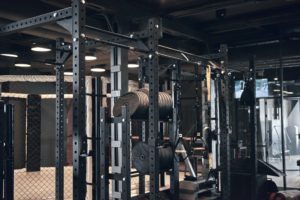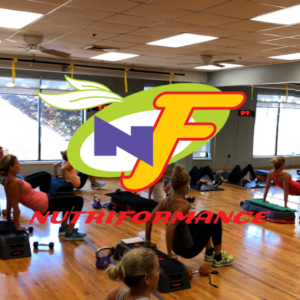Reduce Your Risk of Osteoporosis
by Randy Leopando, CSCS, FMS,
Director of Personal Training
Osteoporosis is an age-related disorder in which bones become gradually thinner, more porous and less able to support the weight of the body. It has a debilitating effect on quality of life, as it limits a person’s independence.
This condition attacks both men and women, but women usually suffer more severely because bone loss accelerates rapidly after menopause. About half of all women and a quarter of all men over the age of 50 will break a bone due to osterporosis. By the time a woman reaches the age of 70, she may have lost as much as 30% of her bone density.
Prevention Is Key
The following lifestyle-related factors may lead to the development of osteoporosis:
- Lack of exercise and physical activity
- Calcium and vitamin D deficiencies
- Prolonged use of certain medications, alcohol, caffeine and carbonated (cola) beverages
- Smoking
Other risk factors include:
- Being Caucasian or Asian
- Having a small or thin frame
- Having a family history of osteoporosis
The good news is that your risk for osteoporosis may be reduced by a combination of exercise and good nutrition. Here’s how:
Get Plenty of Exercise and Physical Activity
Weightbearing exercises can help prevent bone loss and may encourage bone growth. Specific bone sites are more prone to breaks due to the type of bone they contain, including the upper arm (at the shoulder joint), the forearm (at the wrist joint), the thigh (at the hip joint) and the spine. Exercises that load, compress and stress bones are needed to strengthen them. This process is known as “bone loading.”
Before beginning any exercise program, always consult your physician, who will determine whether exercise will be beneficial to you. If you’re given the go-ahead, start slowly and build up over time. If you already have osteoporosis or low bone density, your doctor may prescribe supervised exercise with a physical therapist, exercise physiologist or personal trainer who can show you safe ways to move and exercise.
An ideal program should include aerobic weightbearing exercises four days per week and resistance training two to three days a week. Include flexibility exercises on most days of the week and avoid forward bending of the spine. Weightbearing exercises include walking, running and weight training. Improving muscle strength helps conserve bone mass, but remember that the form of exercise selected should in part be based on individual preferences and previous experience, and must not generate any joint pain. Try to include a variety of exercises that will stimulate as many different bones as possible.
Perform cardiovascular exercises at low-to-moderate intensities. Perform resistance exercises for one or two sets of eight to 10 repetitions at a moderate intensity. Stick with your program and slowly progress to working out at least 20 to 30 minutes at each session. Additionally, always try to include functional exercises in your daily activities. These include exercises such as chair sit-to-stands and single-leg stands that can be performed for 30 seconds two to five times a week. These functional activities will improve your balance and your ability to perform everyday activities.
Eat for Stronger Bones
Did you know that two-thirds of your bone is composed of calcium? You can bolster your bone strength by eating a high-calcium, high-fiber, low-fat diet. Good sources of calcium include:
- Dairy products
- Fish with bones
- Green leafy vegetables
- Almonds, seeds, beans and soy
- Fortified cereals
You also need vitamin D to help absorb calcium. The best source of vitamin D is the sun. About 15 minutes of daily exposure to the back of your hands and face is usually sufficient. People with darker skin may require more time. Sunscreen prevents your body from making vitamin D. If you’re worried about skin damage, some food sources of vitamin D are fish, fortified milk, juice and cereal.
Bones to Last a Lifetime
Bone-loading exercise and a balanced diet are important components of preventing osteoporosis. If you take care of your bones now, they will stay strong enough to carry you safely through a lifetime of health and activity.




